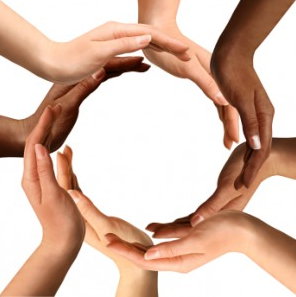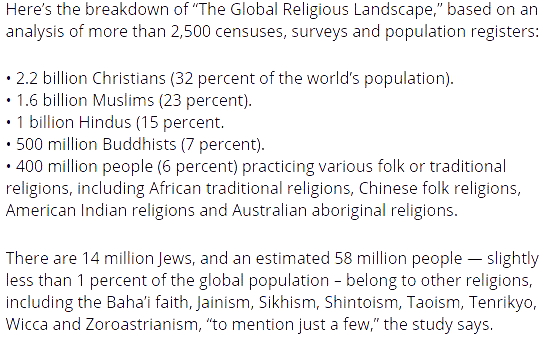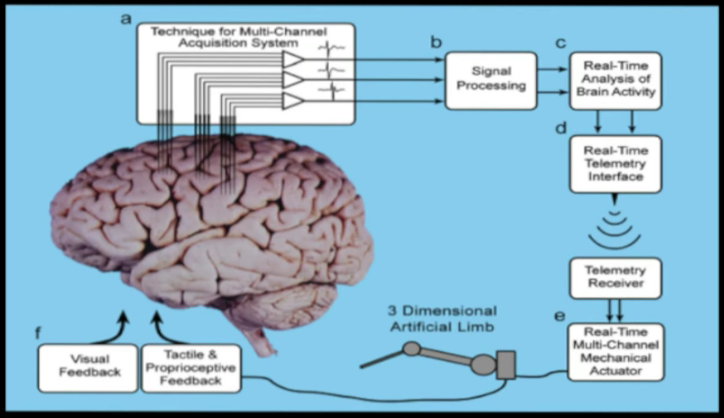Methodology
An Introduction: Just Another Prayer Group, or Something Else? ( Part I )
For centuries, humans have been gathering in groups to pray.
When a group's "world" seems to be at a distance from the collective desires of the members of the group, among several available options for action, one or more can be selected. Sometimes only one option appears to be present, but this is rather rare.
Such options included working together communally to literally build what the group desires. One can think of examples: The Barn Building process of the Amish comes quickly to mind.
Another example in today's world would be an individual who decides to join a group, either a group just getting started, or a well-established group, to contribute to that group's ends, while getting something in return: A payment, a salary, a payback, a reward, a trophy, a job.
Perhaps a personal sense of belonging to something larger than self. This "group" might be a multi-national corporation. An individual seeks to join such a group which as a whole, seeks to obtain a monetary reward for an idea, a service, a product, or several, that it develops and commercializes. The individual joins the group because he or she finds assurance in numbers: a large task can more likely be accomplished if many people are involved, and one is not just going it alone. The benefits to the individual and to the group, of his or her joining up, could be reviewed. But there are at base, some similarities that exist between Barn Building, and Mobil Oil. A need for raw material, a method for flow of work, and a team for converting that to finished product.
For centuries, humans have been gathering in groups to do other things.
Another item on my non-exhaustive list of ways for a group, viewed as a collection of individuals with a common desire, to get what it wants, is to start a war.
There the goal seems straight forward, but rarely is. Others have something that the group wants: so let's take it. And involvement by the group on the other side of a war, consists in individuals coming together to strengthen the counter argument: "no, it's ours, and you can't have it." Notice that the idea of some form of sharing is not included in the present example. This grouping for war, once again of course, requires preparation: a need for raw material, a method (including evolving and refining perceptions about the need for war), and a team for converting that to finished product: in this case victory in war, and all that a victory is supposed to bring. More land, spoils, more team members converted to the group's cause, often an imposed cause lived with resentment.
Been There. Done That.
Perhaps a "War To End All Wars," or a declaration one day that finally, through War, as some of us heard before the 'Christmas Bombings' at the end of the war in Vietnam: "Peace Is At Hand."
And like all work engaged in by humans, with work being the process of getting desired things done, making war has its difficulties, flaws, and failures or learning experiences. And war comes to feel like work, and is usually not all that gay. But possibly in historical retrospect one can come to say, perhaps with the aid of body counts, weights of raw material gained, and changes on the world map: this side won, and the other side lost.
History teaches clearly, that War is not a method for bringing lasting Peace. But it does bring individuals together in groups. It also helps to underscore the differences between groups: not their similarities.
And at the start of war, wrong peceptions are a key ingredient. Side One can clearly see that side Two's perceptions in the current situation, are clearly wrong. Side Two thinks that of Side One's perceptions as well. The distance between these perceptions are presented as huge. As irreconcilable ideologies. As incomprehensible. At that point, all that is missing is firing off the first shot to signal the start of the effort to Bring Peace. How a bullet can clarify a perception is a mystery to me. But by the end, at the armistice signing table, the distance between these wrong perceptions has been greatly reduced. Not without suffering at the abandonment of these two-sided perceptions, but perhaps at least some wrong perceptions have been laid to rest.
Why not before the first bullet? Because behind all the perceptions, ideology, and accounting of pre-war insults and anger, lies that much simpler human thing: "Others have something that the group wants: so let's take it." But there is often no need perceived to say that openly.
One could segue here if desired, into a historical and sociological analysis of all the reasons that contributed in order, to the socialization of the human species. 
If one chooses, one can start the study before the human species. Apes seem pretty close: bacteria less so. Ants form groups to get things done. They attack and respond to attack.
One can succeed in tracing that movement from individual, free and vulnerable, to groups of individuals, less vulnerable, and less free.
Some call this evolution.
Not to be left out are larger forces than human forces. Things like an Ice Age over time, has convincingly confirmed humans of their vulnerability at some level. Certainly, death has an effect to level the playing field as well.
So here I elect to place an end to these introductory musings.
This also out of respect for my anti-diatribe promise made on this site's Home Page.
Rather than embarking on an attempt at an all inclusive review of why people form groups to get their work done, sociologists have that pretty well covered, let's return to a closer look at prayer :
Individuals, come together in groups, to pray.
What does that look like?
With what shall we fill these hands?
Just Another Prayer Group, or Something Else? ( Part II )
"Prayer. Isn't that what religious people do?"
First, before moving on to prayer, let's put some numbers on all those "religious people."
Just how big a group is that?
And of course, a key fact is that this is not one group. It is subdivided into sub-groups. And these do not always get along. If you doubt that lack of cooperation and compassion: Google "Crusades," or "Inquisition," or "Jansenism vs Jesuits," or "what was the war in Ireland about?," or almost anything under "current world events." Not much time? Just click here on Religious Persecution. For better or often worse, a link was often found in history between prayer or those who pray, and persecution.
Prayer, true prayer, is never persecution would say many.
Here are the numbers
These were put together in 2012 by the Pew Research Center’s Forum on Religion & Public Life, for 203 countries and territories, and summarized in a Washington Times article :
Answer Is? :
84% of the world's population subscribes to a religious faith of some form.
I have difficulty in passing over the above numbers without reflecting quietly a moment on 60 million Jewish lives destroyed in the Holocaust.
Do all these religious believers pray every day?
A very safe answer is : No.
How could that be? How do you know? Trust me. Ask around. So if being a believer does not always mean practicing prayer ...
Where can one find the experts in prayer? People who pray every day, and who's lives are formed by prayer ... and why do we think we want to find them?
We want to find them to better appreciate why to pray, or the benefits of prayer.
How to pray, when to pray, where to pray, who should pray, and to whom one should pray: these are components of prayer that risk getting one into lengthy answers with high rates of variability as we travel the world. Even if one moves around a large metropolis, answers will vary. An understandable variance, and as a function of who opens the door when we knock with our list of questions. This does not mean that we should be intolerant of differing answers. Quite the contrary. But let's move on.
Where are the experts?
Both lay persons, and those who have taken vows to participate with a religious order and do, could be our teachers. For me very quickly, the term monastics comes to mind.
What's special about "monastics"?
In general, they have made a lifelong commitment to prayer.
Some visible and less visible components of this commitment might be:
- Their primary commitment and life occupation is to prayer and a prayerful life.
- Prayer takes up a signficant portion of each day and sometimes night.
- To serve and accomplish this commitment, they have found over centuries, that it is easier to establish and maintain this full practice, if they withdraw from the non-monastic world.
- Viewed monastically, this is less a coming out of, and more a moving into.
- This withdrawal might be into physical monasteries living as communities of monastics, or alone in solitary enclosures, or simply at their "house" which is structured nevertheless, set up or even remodelled to support prayer, and to place distance between them and the "outside" world.
- Contact with the "outside world" may still take place in some monastic or prayerful practices. This may also occupy several hours each day, and might be for any of several purposes: teaching, social work, begging food (depending on the practice), participating in lay religious services, caring for the sick and injured, helping the poor, selling religious items, foods, beverages, crafts, paints and commodities to the public, and other means of support for their monastic community.
- A balance is frequently sought by those who direct monastic communities, in finding a workable and productive level of contact and communication between "inside" and "outside" worlds.
- In some communities there is no contact with the outside world. This a necessity supporting the intentions of such a community's monastics.
- Monastics do not pray into the void. They are praying to a named entity or source of energy that they believe in. The names for this entity vary from one religion to another, and one might even be praying to one's self. But usually, an "outside" direction for prayer is observed, usually linked to an "inside" self, and to which it should be closely tied. Establishing and maintaining this close tie is to be desired, encouraged, taught.
- The recipient of the monastic's prayer is invariably couched in a loving relationship. Celibate lives, and related issues, have their origin in not being polygamous with one's monastic love. Meaning, love is directed towards and developed with the recipient of the monastic's prayer. To take on a second loving relationship, well carried out, risks dividing the monastic's vow and commitment to prayer. Not all monastics are celibate.
- The monastic's self might be perceived as a part of a larger whole, such as "the universe" or a unifying collection of souls, energy, guiding spirits, or not.
- Often, to be distinguished from surrounding worldly society, a special dress or uniform is adopted.
- Physical items frequently become symbols in and of the monastic life.
- For centuries, monastics have learned, practiced and perfected various art forms and media. From calligraphy to music, painting, sculpture, gardening, plant medicine, culinary preparation, writing and archiving records: each becomes a prayer.
- Monastic prayer has a strong component of self discovery.
- Monastic prayer is very frequently directed towards problems in the outside world, and announced within the monastic community. These become prayer intentions.
- Monastic prayer takes on many forms. From quiet communion with a named entity which is their source of energy, to reading and prayer (Lectio Divina is one example), to active prayer, to sung prayer, to meditation, to praying through music or drama or ritual, to contemplative or centering prayer, to praying in one's very existence and actions.
- Names for the source of energy and target of prayer for the monastic vary according to religious tradition. God, Yahweh, Allah, etc. Buddha is revered but not worshipped as a god. Most practices are monitheistic, though prayers to saints, and holy ones are also prayer. In Buddhist tradition a bodhisattva is someone who has taken vows to save all living beings before saving him or herself. This is more in line with a Western tradition monastic's purpose. A Buddhist saint refers to someone who has actually reached "liberation," but can still be prayed to.
- The beliefs of the monastic are usually similar to other monastics in the same tradition. These beliefs are frequently codified by the religion to which the monastic belongs. One can nevertheless find some variation within the monastic community in what is personally emphasized as belief by the monastic. In some situations, there is little or no variation in beliefs, which are clearly transmitted, maintained, protected and vehemently defended. At times such defense simply takes the form of silence.
- Monastic communities have leaders, unless the monastic has styled his practice as a hermit. Even then, direction for the monastic in his or her prayer practice, if not provided from superiors in daily contact, may be found in readings from those who have lived the monastic life, and maintained its commitment, faced with all obstacles, and including the effect of living the monastic life itself.
- There is most frequently a "guide book" for the monastic. A principle source of guidance, such as Bibles, prayer rolls, or equivalent, and lesser but still important "guide books" such as a Psalter for instructions in praying and singing specific prayers.
- Monastics who have studied and learned their prayer practice well, almost invariably become teachers. First, of their learned prayer practice, and perhaps after, of other subjects. This contact with seekers on the path, including themselves as inner seekers, and the transformation into teachers and spiritual healers, if well realized, invariably brings with it a guiding principle: Compassion and its mirror image, Self-Compassion. Through prayer, succesful monastics learn how to send this Compassion into the world through their prayer and their practice.
- The monastic spirit and way of life includes bringing with one in all moments, especially during forays or work into the "outside" world, a spirit of prayerfulness. Events encountered in the "outside" world must become occasions for, and inspire, prayer. Any activity is to be performed in a manner that it too, is prayer.
- And finally here, the monastic, in most traditions, if seeking something, some objective, some end point,... that thing when named would almost assuredly be Peace. Monastics are Peace experts. Monastics are Peace seekers. Monastics are lovers of Peace.
- Monastics are human. So when examples arise of monastics taking part in "outside" world politics, protest, demonstrations and teaching against resistance, against injustice by a government, yes that too is monastic. If well done, it too is a form of prayer. Being human, and not always perfected in monasticism and prayer, things sometimes get out of hand when monastics take to the street.
So now that we have encountered some experts in prayer ...
Shouldn't we ask them our important questions?
Why pray? What do you see as the benefits of prayer? And to reveal a piece of the answer, what is the benefit to the monastic? And closing in on the theme of this site, what is the benefit to the world? Is prayer effective? How do we know? How do we see and notice the benefit? And to attain these benefits, is there a tool, a method, a means that goes beyond prayer?
Perhaps here we will find, that that too, is prayer.
Visit a community of monastics.
There are many reasons to do this. In those where this is possible, you will probably, and perhaps suddenly, feel very welcomed.
One reason to do this, is to investigate for yourself, to see if, perhaps as you leave, a certain sensation or assuredness, leaves with you.
That assurance feels something like this,... a question, a hunch, something to ponder on the way home:
Can these monastic practices make us aware of, and effectively bring us to a "Butterfly Effect" where no prayer, no message, no Challenge, can be practiced without having an effect? Perhaps a desired effect for an action or need. A request that became an intention within the practice of the monastic community. Perhaps an effect that keeps our world spinning correctly on its axis?
A practice where no good word is too small, to contribute to the Beauty that is Compassion and Peace.
Hey. That's The Challenge.
can these monastic practices make us aware and effectively bring us to a "Butterfly Effect" where no prayer, no message, no Challenge, can be practiced without having an effect to keep our world spinning correctly on its axis? Where no good word is too small, to contribute to the Beauty that is Compassion and Peace
Toolbox search
Perhaps you have, as I do, a toolbox.
Maybe several. Now try to see yourself with your head stuck under a bathroom sink, trying to unscrew, remove replace... whatever. Ultimately, the goal is to let the water go through to where it needs to get. Equally true for water on the way up, or on the way down.
Anyway, one hand waving around in space, you reach blindly into that toolbox, and by feel, you pull something out, put it in front of your nose under the sink, and say with dismay to yourself (or to your dog who's seated nearby and watching with great interest): "No, that's not it." Tool gets dropped and pushed out of the way. (Dog sniffs tool, thinking: "I could have told you it wasn't that one.")
Same exercise. "No, that's not it either." Same result again. I'll spare you the sequel.
But finally, having only slightly wrenched your back as you crawled back out to seriously consider your toolbox's contents, you are able to say: "Aha, ... there you are," as you grasp a favorite pipe wrench, or crescent wrench, or strap wrench, or whatever it is, holding it up for your dog to see and approve. You have already seen in your mind's eye that it is going to be the tool. You already see the piece under the sink, loosening at the first "oomph" of this extension of your human hand.
So that's what SendThemPeace.com is looking for in its toolbox. An extension of the human brain. But probably much more, an extension of the human spirit. An extension reaching out into the world to lay hold and grasp that world where its needed, and give it a serious turn. "Human spirit" suggests a spiritual tool, and not to get lost in semantics, but the sense of that word might bother some readers. Others not at all, as they welcome a spiritual tool, and wipe it off to get it into pristine shape after its last, and before its next use. Perhaps it's a Universal tool, or at a minimum, a Global tool.
I am not going to ask you to start training to fix your sink at a distance, the next time that's needed, without touching it. Perhaps a web page exists that could teach you that, but it won't be this one.
I am going to ask you to address a problem in our world, without buying a plane ticket, bringing along your toolbox with your suitcase, and taking a cab to the problem's location after your flight touches down: with or without wearing a helmet and flack jacket. Instead, I'm going to ask you to do just that, address and solve a problem, right from where you're currently located. In fact, I already have: and that's The Challenge.
"Good luck," I add, as you embark. And maybe you respond, "Good luck, yourself."
Are we starting from a place of having no idea at all, of where to begin?
Of how to begin? What could we find if we give the SendThemPeace.com toolbox a shake, and opened it up to see what's available?
In other domains than Sending Peace, people have been at work.
But if you already have that tool that's better than all the rest, would you please share it?
Either here below through a Comment (sign up first!), or by eMail to tools@sendthempeace.com
Brainstorms
Try to imagine this:
A rhesus monkey seated in a research chair at Duke University, gets a drop of orange juice whenever it accomplishes a task.
The task is to play a video game and hit a target, using a joystick like kids do.
The monkey, named Aurora, learns the task, and gets her orange juice.
Then they take away the joystick.
So in a short time, watching her video screen, Aurora teaches herself to hit the target WITHOUT any joystick, but just using her brain, and the waves that it emits.
A bit like yours as you read this. Sorry. No orange juice.
Next...
Another rhesus in the same lab, learns to run on a treadmill, with a similar system of reward (Do you like Brazilian orange juice?).
In a lab in Kyoto, Japan, is a robot that can walk. It walks in response to brain waves, since it is equipped with the equivalent of an EEG machine that senses brain waves. Here's what happens next:
- The rhesus runs on the treadmill in North Caroline, looking in real time by video at the robot in Kyoto.
- Without being wired up in any way, the rhesus sends its brain waves to the robot, telling it to walk.
- That the robot in Kyoto is now walking is shown by video to the rhesus in North Carolina, which adjusts its thoughts to make the robot walk faster and with more stabilty.
- The time it takes for the rhesus to "think" his brain waves to Kyoto, Japan is about 20 milliseconds. Less than the time required for its brain to send the same message to its own leg, to make it move via neurons and axons we call "nerves" that innervate its muscles, and send back info about where it has just placed its foot.
- The rhesus gets a drop of orange juice. But the reward does not come as a function of what she does with her body, but by every correct step that she is instructing the robot to take on the other side of the planet. From Duke, she adjusts the robots movement in Kyoto.
Dr. Miguel Nicolelis, Neuroscientist, has been working on this for over 30 years.
The meaning of this, according to Nicolelis?
Here is his 15 min TED talk, quite worth the time ...
And here an article from the Business section of VentureBeat about the same subject.
So what have you been thinking about lately?
Wait, let me tell you ... is your nose itching?
So this would be called Brain-to-Brain Communication. Which puts us very quickly into the "woo-woo" stuff of today, and people who pretend to know what Quantum Mechanics is all about. But this is actually, pretty good science. No, phenomenally good science. And soon a miracle will happen in which someone says: "Get up and walk," and the paralyzed person will first think about it, then do it.
Here's the schematic of how to do this, if you're interested in building your own:
Of course. Seems logical. Imminently doable. (His colleagues in NeuroEngineering called him nuts).
Thirty years of research planning, and 15 years to realize it. So watch this ...
18 months of work, by a huge interntional team, brought together in Brazil. Now that is where our world is today.
Resumé :
- A monkey, seeking a reward, thinks a thought.
- That thought is a method. A way of accomplishing a task, no matter what obstacle needs to be overcome, to get from here to there.
- The monkey studies, practices, learns from its failures, tries again, and acquires knowledge for the task.
- An INTERFACE gets the thought out of the monkey's brain. It might be an electrode or several implanted in the brain with wires leading out, or it might be a skull cap, fitted with captors or electrodes that pick up monkey brain waves, and transmits them. Like an EEG.
- When the task is not met: no reward. When it is: reward.
- When the task is not met: the monkey changes it's thoughts, until the machine, or arm, or robot, moves in the desired manner.
- Humans with neurologic deficits (paraplegics) equipped with (1) a skullcap with electrodes (one eventually could implant them permanently like in the monkey), and (2) a machine, in this case an "exoskeleton" with motors and controls wired to respond to human thought, moves the human who cannot move on his own, but through thought, makes the machine move as desired. Learning, creativity, knowledge required.
What do they know, that we haven't learned yet?
Two questions ...
Dr. Nicolelis allows himself to see this as an inroad to Brain-to-Brain Communication. In the above, I have placed INTERFACE in caps. This because it is the tool that we are seeking, to SendThemPeace.
1. Can we imagine an interface, without wires, that gets our thoughts, and even more, our very personal energy, out of our heads, our hearts, our selves,... and into the world?
2. To make this wireless tool work, does it require a reward for the human? What would that reward be? I assume in this setting, that it would be seeing Non-Peace and Ego-motivated Destruction, manifest as Peace and Compassion. I would find that rewarding. How about you?
Are there at present ...
any such "wireless" disciplines, practices, methods, tools, ... already in use, and effective at getting the task done?
Just like Aurora the monkey learned to do, masterfully, while at a distance from the object in need of liberation.
Let’s look around some more in our toolbox ...
Manifesting Peace & Compassion, at a distance.
"Peace & Compassion for whom, again?"
For targets identified in our world, which need Peace & Compassion desperately. More on how to identify such targets elsewhere.
Here, as promised in a previous article, we will look into our toolbox for an available and effective tool. Something that teaches one how to approach and meet The Challenge.
Medicine
Ever since illness and death have been part of human existence, (probably the first day or very soon thereafter), an effort seemed obviously needed to make things better. Very prominently early on, to take away pain. To support recovery from illness. To find an escape from death, although this may not have been a primary concern, especially since nothing appeared efficacious in that pursuit, and at times, this may not have been viewed as an unnatural end to be avoided.
The primordial goal, from inception to the present: to relieve suffering and heal the sick where possible.
In general, the evolution of Medicine and its subspecialties remains a success story. Proof? Today's longevity statistics compared with those for a Roman in 30 BC. While there can be and are gripes: lack of sensitivity to some human needs, expensive, a source of health complications at times, global maldistribution, etc., etc., etc... we are today, at a distance from leeches and blood-letting, although they still in fact have their place and usage.
One guiding principle that has brought Medicine out of the Dark Ages, when someone's head was trephined to remove the "Stone (or Stones) of Madness, has been the Scientific Method. This, a process to evaluate accuracy of diagnosis (= naming the disease: a physician's main job), and effectiveness of a given treatment for that diagnosis, and when compared also with other treatments. The addition of Statistical Methods, and eventual Epidemiology, added immensely to the pursuit and definition of Medical Truths. An Idea becomes Hypothesis, which is tested to see if its strength holds to defend itself as Theory, or fall by the wayside. Such analytical tools can be extended too far it seems. "Withdrawal of chicken soup results in man's death."
Another fault of the Scientific Method, frequently arises in its dismissal of what it cannot prove to be "true." It would be OK, or at least better if in such circumstances it reported just that: "the study did not prove the hypothesis true, nor disprove it." Or, "no significant difference was found between these two treatments." Or, "no effect was found for this treatment when compared with a sham treatment."
But in domains where the structuring of that Scientific Method has been deemed difficult or impossible, let's select "energy healing" as an example, it should stick to its guns (or Method) and simply say: "no effect identified." Instead, practitioners and researchers have too often, more in the past than today certainly, simply dismissed what The Method could not figure out how to test, or simply, had other things to investigate. Investigations where if the hypothesis was A+B=C, one can hold "A" and "B" in one's hand (or in a beaker if too hot or messy), and measure "C" directly as well, and using some tool that can be calibrated and results measured and counted. Now that's a nice protocol. Absent such a nice protocol, certain phenomena are tolerated (not always), but not condoned. With or without ridicule. I liked the answer of one of my professors from the past: "I don't know. But I'll try to find out for you."
Not Medicine
Some aspects of human existence, fit poorly into The Scientific Method. I prefer to think, and consider it important to say, that they don't fit well yet.
But if something cannot at the present time be confirmed by The Scientific Method, does not mean that it can not be. Sir Isaac Newton, taking a Final Exam in Einstein's Theory of Relativity, would have obtained a poor grade.
So I prefer to give such "mysteries" another Heading ...
Becoming Medicine
There are some domains that resist dissection. They may also resist explanation for what is going on in their practice, because even their practitioners don't know. Shamanism, mentioned before, is one example. Sort of like answering a patient with appendicitis who asks: Q "How are you going to take out my appendix?" Ans. "Oh, I don't know, I'll give it a whack and see what happens. Hot lights and cold steel. I've never really understood how I get that little worm out, but suddenly there it is on the scrubbed Nurse's Mayo stand." In our present day and developed world, a less than satisfactory answer. Why? Because we are looking for facts, details, and explanation that reassures that this guy/ gal with the mask knows what he/ she is doing. Clearly, no relationship exists, or not a trusting relationship, when "time is of the essence." "Hope you know what you're doing! ..." is perhaps all one can hope for.
Is it actually possible that in the other scenario, whether the practitioner knows exactly what he's doing and can explain it in detail, step by step, or has no idea of what happens when he does what he/ she does ... doesn't matter? Because a trusting relationship has already been brought into being. Something to be remembered there. To "become Medicine," it should nevertheless meet some test or statement of effectiveness.
Happily, not to say "it's about time," The Scientific Method has in many of these often ancient and traditional interventions, begun to carry out a fly-by, and seek out a good and safe place to land in "Alternative Medicine."
How did we get into this?
We are looking for tools, somewhere in our toolbox, that can help us send Peace and Compassion where needed. And this with a minimum of wires. We dismiss here for now, to stay centered in our thoughts at SendThemPeace.com, high explosives and other means of waging war as methods to pursue, saying one day: "Peace Is At Hand." We are working to get beyond that. The Challenge refuses to accept: "just not possible." So don't even ask.
If the goal of The Scientific Method is to be able to say: "Yeah, that treatment works," and keep the treatment. Or "Nope, those pills make no difference in the patient's care," and throw them in the trash with all their packaging and handy dispenser,... what is a pertinent example of "Becoming Medicine" that might have some useful and applicable methodology for The Challenge at SendThemPeace.com?
You might not like this but stay with me and click the link anyway : the Efficacy of Distant Healing.
Today, one might frequently hear a reflection akin to "Our world is getting sicker and sicker." And if that meets with at least a few vertical head nods, doesn't that suggest a need for some kind of healing, and by some kind of healer, or a team of healers? A team that directs its healing, towards one "patient," or as presented here one Target, at a time to sustain focus and combine and maximize its energy.
How will we know if we have fallen upon a valuable tool?











